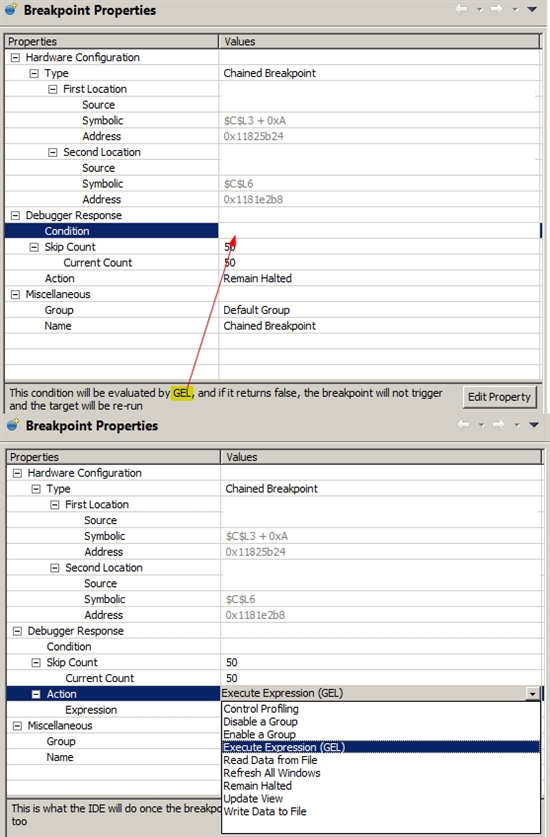Hi,
In UBM (Unified Breakpoint Manager) both Condition and Action are required to be in GEL format.
However I searched and read many documents:
- In CCS help, there is very little content on using UBM except articles like Modifying Breakpoint Properties.
- In TI.com or E2E.TI.com, there is also virtually no information on how GEL in these places should be set
Could someone provide examples on their use?
Paul


